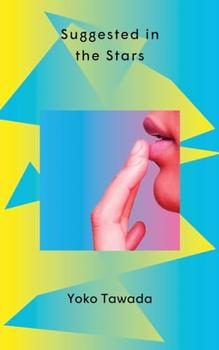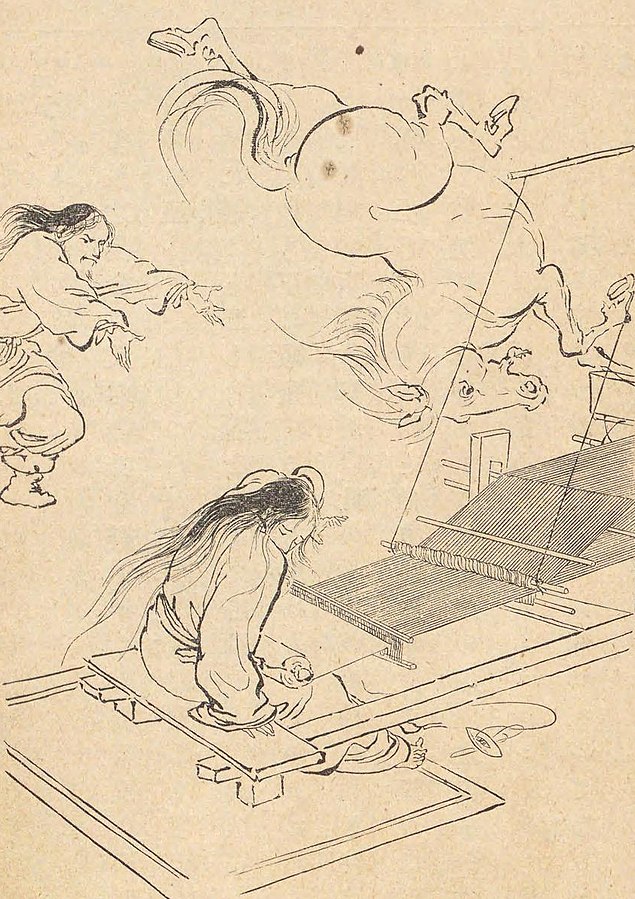Summary | Excerpt | Reviews | Beyond the Book | Read-Alikes | Genres & Themes | Author Bio

This article relates to Suggested in the Stars
 In Yoko Tawada's novels Scattered All Over the Earth and Suggested in the Stars, characters retell stories from the Kojiki, translated as "Records of Ancient Matters" or "Records of Ancient Things." The Kojiki is the oldest text from Japan, written mostly for the purpose of establishing a clear line of descent from the Shinto gods and the supreme sun goddess Amaterasu to the emperors of the 7th and 8th century CE. The Kojiki was written using Chinese characters to represent Japanese sounds, because there was not yet a way to record Japan's spoken language when it was created. The book is divided into three parts, the first of which describes the many Shinto gods and recounts the stories or myths about them, which are often violent and bloody.
In Yoko Tawada's novels Scattered All Over the Earth and Suggested in the Stars, characters retell stories from the Kojiki, translated as "Records of Ancient Matters" or "Records of Ancient Things." The Kojiki is the oldest text from Japan, written mostly for the purpose of establishing a clear line of descent from the Shinto gods and the supreme sun goddess Amaterasu to the emperors of the 7th and 8th century CE. The Kojiki was written using Chinese characters to represent Japanese sounds, because there was not yet a way to record Japan's spoken language when it was created. The book is divided into three parts, the first of which describes the many Shinto gods and recounts the stories or myths about them, which are often violent and bloody.
Amaterasu Ōmikami, translated as "the Great Divinity Illuminating Heaven," is the sun goddess and main deity of the Shinto religion. Her younger brothers are Susanoo, the storm god, and Tsukiyomi, the moon god. One character in Tawada's series is called Susanoo after the god, a childhood nickname that stuck. It wasn't a very nice nickname—Susanoo is described in the novel as Amaterasu's "nasty kid brother" and "pretty much a flop of a man."
The most famous legend about Amaterasu also concerns Susanoo. Their father tasked all three of his children with ruling the heavens, but Amaterasu had the divine right to rule as the first born. Susanoo resented this and challenged Amaterasu to a competition of who could create the most gods. Susanoo took Amaterasu's necklace and created five goddesses out of it, and she took his sword and created three gods. Susanoo believed he won the challenge because he created the most gods, but Amaterasu claimed she won because they were made from her jewels.
Susanoo then went on a rampage, wreaking destruction on heaven and Earth and claiming he was the rightful victor. He destroyed Amaterasu's rice fields and threw a skinned horse into the hall where Amaterasu was weaving with her personal attendants, killing a young maiden. (There are different versions of the story—in some, the maiden faints dead at the sight of the horse; in others, she is stabbed with a shuttle.)
Amaterasu was angry, mournful, and ashamed that she had indirectly led to this chaos, so she fled to a cave now known as Amano-Iwato, the Heavenly Rock Cave. With the sun goddess hidden away, the world was dark and chaotic and a long winter set in. The gods looked down at the world and decided they had to bring Amaterasu back, so they lured her out with a party and dance. When she emerged from the cave, light flooded the world, and spring began. Susanoo was banished, and Amaterasu returned to heaven.
Susanoo throwing a horse into Amaterasu's loom
Illustration by Hagino Yoshiyuki (萩野由之, 1860-1924), via Wikimedia Commons
Filed under Places, Cultures & Identities
![]() This article relates to Suggested in the Stars.
It first ran in the October 2, 2024
issue of BookBrowse Recommends.
This article relates to Suggested in the Stars.
It first ran in the October 2, 2024
issue of BookBrowse Recommends.
Your guide toexceptional books
BookBrowse seeks out and recommends the best in contemporary fiction and nonfiction—books that not only engage and entertain but also deepen our understanding of ourselves and the world around us.